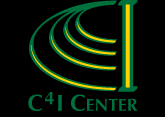
C4I
Home
Center Overview
C4I
Brief
C4I
People
Objectives
Programs
Funding & Support
Industry Partners
Publications
Recordings
Open Source Software
C4I
Events
News
Internet Conference
GMU C4I Center Seminar
Evaluating Probability Maps
Dr. Charles Twardy
Friday, December 7, 2012 from 1:30 PM
Nguyen Engineering building, Room 4705
ABSTRACT
In the United States, wilderness search and rescue operations consume thousands of man-hours and dissipate
millions of dollars per year. Timeliness is critical as the probability of successfully rescuing a lost
individual decreases substantially after 24 hours. Fortunately over 90% of searches are resolved by standard
"reflex" tasks within the first operational period. However, the remaining cases are the most costly and
both require and reward intensive planning. Planning begins with a probability map showing where the lost
person is likely to be.
There are many ideas for generating probability maps. Mason's MapScore project provides a way to evaluate
them on actual historical searches. I will describe work done in the last year creating baseline performance
figures for statistical "distance ring" models and a new idea to use "watershed" rings devised from GIS
watershed features. We are also interested in developing and testing more advanced models.
The talk covers work funded by an NSF Research Experience for Undergraduates grant. The students were:
Nathan Jones, Eric Cawi, and Elena Sava.
BIO
Dr. Charles Twardy received a Dual Ph.D. in History & Philosophy of Science and Cognitive Science, from
Indiana University. He studies inference and reasoning from several angles, with special interest in
Bayesian networks, causal reasoning, and argument maps. Recent projects include trajectory abstraction,
lost person behavior, sweep width estimation for wilderness search, scoring probability maps, and building
classifiers to tag events.
